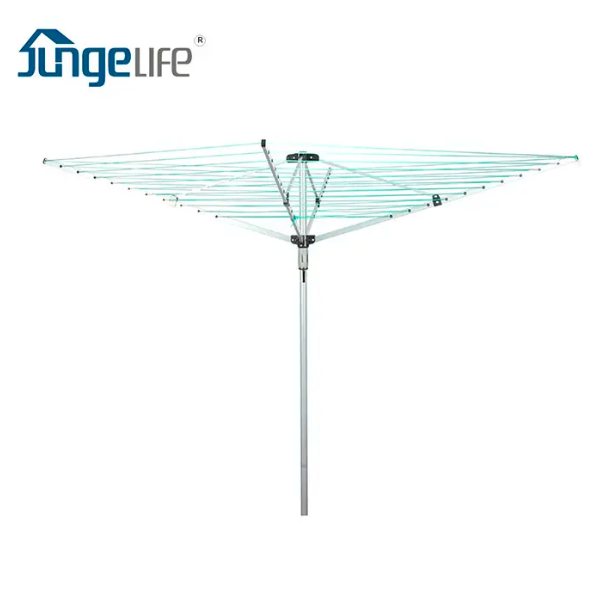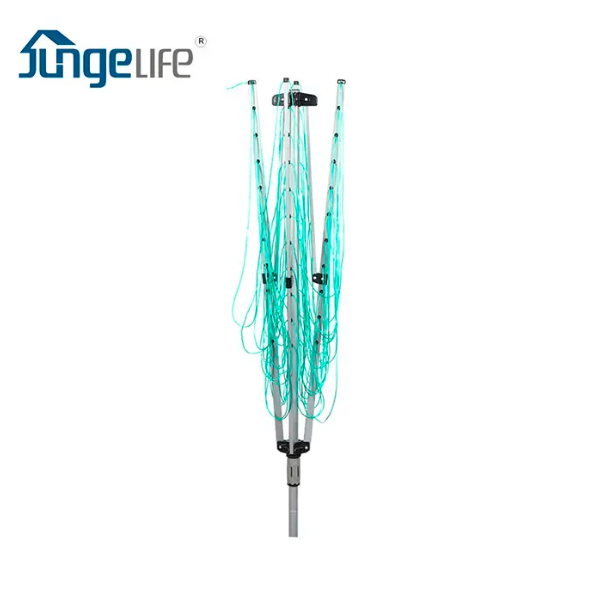A spin clothes dryer, also known as a spin clothesline or spin dryer, has become a must-have household item for many homeowners around the world. It has revolutionized the way we dry our clothes and has grown significantly over the years. In this article, we explore the development and evolution of the rotary clothes dryer and how it has become an integral part of our everyday lives.
The concept of the rotary airer dates back to the early 1800s, when it was customary to hang clothes on a line or rack to dry. However, it is a laborious process that requires constant attention, especially in adverse weather conditions. This prompted inventors to devise a more efficient and effective way to dry clothes. Thus, the rotary clothes dryer was born.
The earliest rotary clothes racks were simple wooden poles with multiple threads for hanging clothes. Users can manually spin them, exposing clothing to sunlight and wind to aid in the drying process. Rotary clothes dryer designs improved over time with the introduction of metal frames and more complex rotating mechanisms.
In the mid-20th century, the rotary clothes dryer underwent a major transformation. The company started producing a spin drying rack with a collapsible frame, making it easy to store when not in use. This innovative feature enables homeowners to use their outdoor space more efficiently. Plus, these drying racks are height-adjustable, allowing users to hang laundry at a comfortable working height, reducing back strain.
As technology advances, rotary clothes dryers continue to evolve. Manufacturers began experimenting with different materials to improve durability and weather resistance. Stainless steel, aluminum, and plastic are popular choices, making rotary clothes racks more resistant to rust and corrosion. The materials also make the drying racks lightweight, enabling users to easily move them around the garden.
Another significant development in the evolution of rotary clothes dryers is the introduction of accessories and additional features. The company began offering rotating clothes rack covers to protect clothes from rain, dust and harmful UV rays. Some models are equipped with rotating clothes rack pegs or concrete anchors to increase stability and prevent the clothes rack from tipping over in high winds.
In recent years, environmental concerns have driven the development of eco-friendly rotary clothes dryers. Many manufacturers now produce clothes racks made from sustainable materials and promote energy-saving features. Some models are designed to harness the power of the sun, utilizing built-in solar panels to assist in the drying process. These eco-friendly options not only save energy, but also reduce the carbon footprint associated with traditional methods of drying clothes.
As the demand for rotary airer continued to grow, an innovative design came into being. For example, the 'Rotodry' clothes rack contains a swivel mechanism that rotates the entire clothes rack at the touch of a button. This rotation ensures that all sides of the garment are evenly exposed to the sun and wind, resulting in faster and more efficient drying.
In conclusion, rotary clothes dryers have undergone significant development and evolution over time. From its humble beginnings as a humble wooden pole to today's advanced models, it has changed the way we dry our clothes. With features like adjustable heights, collapsible frames, and eco-friendly options, the rotary clothes rack has become an essential piece of equipment in homes around the world. As technology continues to advance, we can expect even more innovative and efficient designs in the future.
Post time: Jul-31-2023


